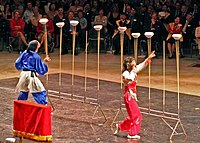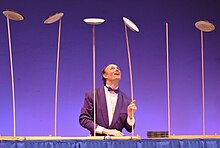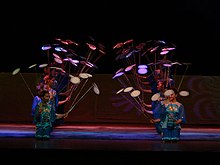
Plate spinning is a circus manipulation art where a person spins plates, bowls and other flat objects on poles, without them falling off. Plate spinning relies on the gyroscopic effect, in the same way a top stays upright while spinning. Spinning plates are sometimes gimmicked, to help keep the plates on the poles. [1]





